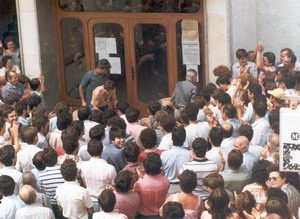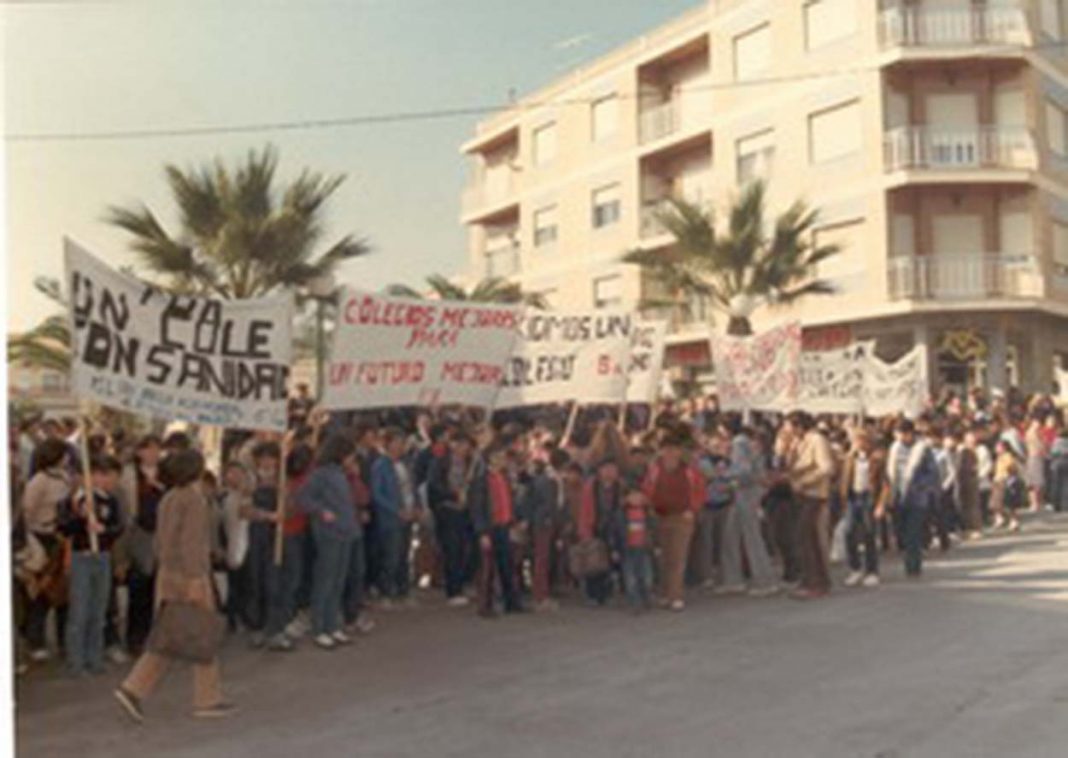The Civil War left scars on much of Spain’s social landscape, especially locally, in a corner of its municipality, and one forgotten by the City’s government. Over 30 kilometres away from politicians who would not listen, the residents were abandoned to their fate, with little social or economic support.
Ring a bell for anyone?
Well in this case the subject of the article is Pilar de la Horadada which had long struggled for its segregation from the City of Orihuela, a struggle that ended happily for the pilareños on July 30, 1986, beginning one of the most important chapter’s in its history.
Local residents felt the abandonment, first in agriculture and also in national tourism. They were tired of paying exorbitant taxes to an Orihuela that didn’t deliver anything in return.
But now, 33 years on, the sustainable and unstoppable development that Pilar de la Horadada is going through is nothing but a reflection of the Pilaresian idiosyncrasy of a struggling and enterprising character that has been forged by the succession of historical events, in this case the struggle for segregation in this corner of the Mediterranean, which for decades was subjected to the abandonment of the municipality of Orihuela, as a district of its municipality.
Pilar de la Horadada was neglected of its social and economic needs; it was never considered a place to invest. The people of Piñera paid exorbitant taxes and the infrastructure was minimal, if not almost non-existent: the sewage service did not exist, nor the lighting, nor many other first line services. In addition, the communications with Orihuela were also non-existent, a fact that made it even more difficult to interact with the City council, paralysing the development of both infrastructure and local business.
Immersed in a situation with no way out, the people of Piñera, who have always been aware of the enormous economic potential of their lands, both for tourism and for agriculture, knew at that time the progress that the segregation of Orihuela would bring to the people.
The first signs of a struggle for segregation are recorded in 1936 with a document signed by Ginés de Gea Sánchez. It was the beginning of a struggle that would take five decades before it would eventually succeed with the provincial and regional authorities.
In 1957, the second document demanding municipal independence was presented to the City Council of Orihuela. This was subsequently appealed in 1963 by the Orihuela government because it did not recognize the legitimacy of the many thousands signatures of the people who appeared in it. The Oriolan Government ridiculously demanded that each of the signatories go to the Orihuela Town Hall to certify the signatures, a condition that was practically impossible to meet.
Throughout these meetings, the Pilareña commission and Orihuela present their proposals for territory and for segregation. However, it was impossible for them to reach an as a result of which, the Ministry decided to prepare its own document.
The brief prepared by the Consellería was presented on July 25, 1985 before the Council of State. However it was denied in March 1986 by the Generalitat Valenciana. This decision by the Autonomous Government caused a revolt that ended with the torching of municipal furniture, a general strike, regular road blocks of the N332 national highway, and many other local demonstrations. Of all these actions, perhaps the most emblematic, or the one that caused the most local fuss, was the boarding up of the local town hall, at which time Pilareños asked the policemen who were controlling the demonstration not to wear the uniforms bearing the coat of arms of Orihuela.

With the aim of calming the revolts, on April 3, 1986, Orihuela City Council promised to invest 750 million pesetas in sewer and drinkable water. However, this did not satisfy the residents of Pilar de la Horadada and the demonstrations intensified until, on April 5, the police were required to use tear gas against the demonstrators.
It was then that the Civil Governor of Alicante telephoned the President of the Generalitat Joan Lerma to propose himself as a mediator in the conflict between the pro-city commission and the conseller, in order to put an end to the conflict.
However, even as late as July 26, 1986, the president of the Provincial Council was still assuring the media that segregation would not be granted to Pilar de la Horadada but on July 30, Emilio Sánchez Serra received a call which finally delivered the approved decree that granted the segregation of the 6,000 residents of Pilar de la Horadada.
Since that day, the newly inaugurated Town Hall of Piñera decided that on every 30 July a party marking segregation from Orihuela would be celebrated.





